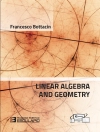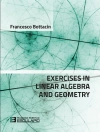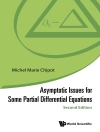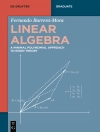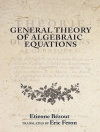This Student Solutions Manual to Accompany Linear Algebra: Ideas and Applications, Fourth Edition contains solutions to the odd numbered problems to further aid in reader comprehension, and an Instructor’s Solutions Manual (inclusive of suggested syllabi) is available via written request to the Publisher. Both the Student and Instructor Manuals have been enhanced with further discussions of the applications sections, which is ideal for readers who wish to obtain a deeper knowledge than that provided by pure algorithmic approaches.
Linear Algebra: Ideas and Applications, Fourth Edition provides a unified introduction to linear algebra while reinforcing and emphasizing a conceptual and hands-on understanding of the essential ideas. Promoting the development of intuition rather than the simple application of methods, this book successfully helps readers to understand not only how to implement a technique, but why its use is important.
Cuprins
STUDENT MANUAL 1
1 SYSTEMS OF LINEAR EQUATIONS 3
1.1 The Vector Space of m × n Matrices / 3
1.1.2 Applications to Graph Theory I / 7
1.2 Systems / 8
1.2.2 Applications to Circuit Theory / 11
1.3 Gaussian Elimination / 13
1.3.2 Applications to Traffic Flow / 18
1.4 Column Space and Nullspace / 19
2 LINEAR INDEPENDENCE AND DIMENSION 26
2.1 The Test for Linear Independence / 26
2.2 Dimension / 33
2.2.2 Applications to Differential Equations / 37
2.3 Row Space and the Rank-Nullity Theorem / 38
3 LINEAR TRANSFORMATIONS 43
3.1 The Linearity Properties / 43
3.2 Matrix Multiplication (Composition) / 49
3.2.2 Applications to Graph Theory II / 55
3.3 Inverses / 55
3.3.2 Applications to Economics / 60
3.4 The LU Factorization / 61
3.5 The Matrix of a Linear Transformation / 62
4 DETERMINANTS 67
4.1 Definition of the Determinant / 67
4.2 Reduction and Determinants / 69
4.2.1 Volume / 72
4.3 A Formula for Inverses / 74
5 EIGENVECTORS AND EIGENVALUES 76
5.1 Eigenvectors / 76
5.1.2 Application to Markov Processes / 79
5.2 Diagonalization / 80
5.2.1 Application to Systems of Differential Equations / 82
5.3 Complex Eigenvectors / 83
6 ORTHOGONALITY 85
6.1 The Scalar Product in n / 85
6.2 Projections: The Gram-Schmidt Process / 87
6.3 Fourier Series: Scalar Product Spaces / 89
6.4 Orthogonal Matrices / 92
6.5 Least Squares / 93
6.6 Quadratic Forms: Orthogonal Diagonalization / 94
6.7 The Singular Value Decomposition (SVD) / 97
6.8 Hermitian Symmetric and Unitary Matrices / 98
7 GENERALIZED EIGENVECTORS 100
7.1 Generalized Eigenvectors / 100
7.2 Chain Bases / 104
8 NUMERICAL TECHNIQUES 107
8.1 Condition Number / 107
8.2 Computing Eigenvalues / 108
Despre autor
Richard C. Penney, Ph D, is Professor in the Department of Mathematics and Director of the Mathematics/Statistics Actuarial Science Program at Purdue University. He has authored numerous journal articles, received several major teaching awards, and is an active researcher.





